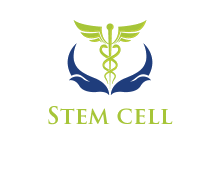


Stem Cell Therapy
Stem cell therapy is the use of stem cells to treat or prevent a disease or condition.
Bone marrow transplant is the most widely used stem cell therapy, but some therapies derived from umbilical cord blood are also in use. Research is underway to develop various sources for stem cells, and to apply stem cell treatments for neurodegenerative diseases, diabetes, heart disease, and other conditions.
Stem cells can be used to create living and functional tissues to regenerate and repair tissue and organs in the body that are damaged due to age, disease and congenital defects. These cells have the power to go to the damaged areas and regenerate new cells and tissues by performing a repair and a renewal process, restoring functionality. Regenerative medicine has the potential to provide a cure to failing or impaired tissues.
While some believe the therapeutic potential of stem cells has been overstated, an analysis of the potential benefits of stem cells based therapies indicates that 128 million people in the United States alone may benefit with the largest impact on patients with Cardiovascular disorders (5.5 million), autoimmune disorders (35 million) and diabetes (16 million US patients and more than 217 million worldwide): US patients with other disorders likely to benefit include osteoporosis (10 million), severe burns (0.3 million),spinal cord injuries (0.25 million).
The most well-established and widely used stem cell treatment is the transplantation of blood stem cells to treat diseases and conditions of the blood and immune system, or to restore the blood system after treatments for specific cancers. The US National Marrow Donor Program has a full list of diseases treatable by blood stem cell transplant. More than 26,000 patients are treated with blood stem cells in Europe each year.
Besides, for over 30 years, bone-marrow have been used to treat cancer patients with conditions such as leukemia and lymphoma. During chemotherapy, most growing cells are killed by the cytotoxic agents. These agents, however, cannot discriminate between the leukemia or neoplastic cells, and the hematopoietic stem cells within the bone marrow. It is this side effect of conventional chemotherapy strategies that the stem cell transplant attempts to reverse; a donor's healthy bone marrow reintroduces functional stem cells to replace the cells lost in the host's body during treatment. The transplanted cells also generate an immune response that helps to kill off the cancer cells. This process can go too far, however, leading to graft vs host disease, the most serious side effect of this treatment.
However, with the ability of scientists to isolate and culture embryonic stem cells, and with scientists' growing ability to create stem cells using somatic cell nuclear transfer and techniques to create induced pluripotent stem cells, controversy has crept in, both related to abortion politics and to human cloning. Additionally, efforts to market treatments based on transplant of stored umbilical cord blood have proven controversial.

Harvesting bone marrow for hematopoietic stem cell transplantation
China
Stem cell research and treatment was practiced in the People's Republic of China. The Ministry of Health of the People's Republic of China has permitted the use of stem cell therapy for conditions beyond those approved of in Western countries. The Western World has scrutinized China for its failed attempts to meet international documentation standards of these trials and procedures.

Ukraine
Today, Ukraine is permitted to perform clinical trials of stem cell treatments (Order of the MH of Ukraine № 630 "About carrying out clinical trials of stem cells", 2008) for the treatment of these pathologies: pancreatic necrosis, cirrhosis, hepatitis, burn disease, diabetes, multiple sclerosis, critical lower limb ischemia. The first medical institution granted the right to conduct clinical trials became the "Institute of Cell Therapy"(Kiev).
South Korea
In 2005, South Korean scientists claimed to have generated stem cells that were tailored to match the recipient. Each of the 11 new stem cell lines was developed using somatic cell nuclear transfer (SCNT) technology. The resultant cells were thought to match the genetic material of the recipient, thus suggesting minimal to no cell rejection.
Middle East
Since 2008 many centres and doctors tried a diversity of methods; in Lebanon proliferative and non-proliferative, in-vivo and in-vitro techniques were used. The Regenerative Medicine also took place in Jordan and Egypt.









